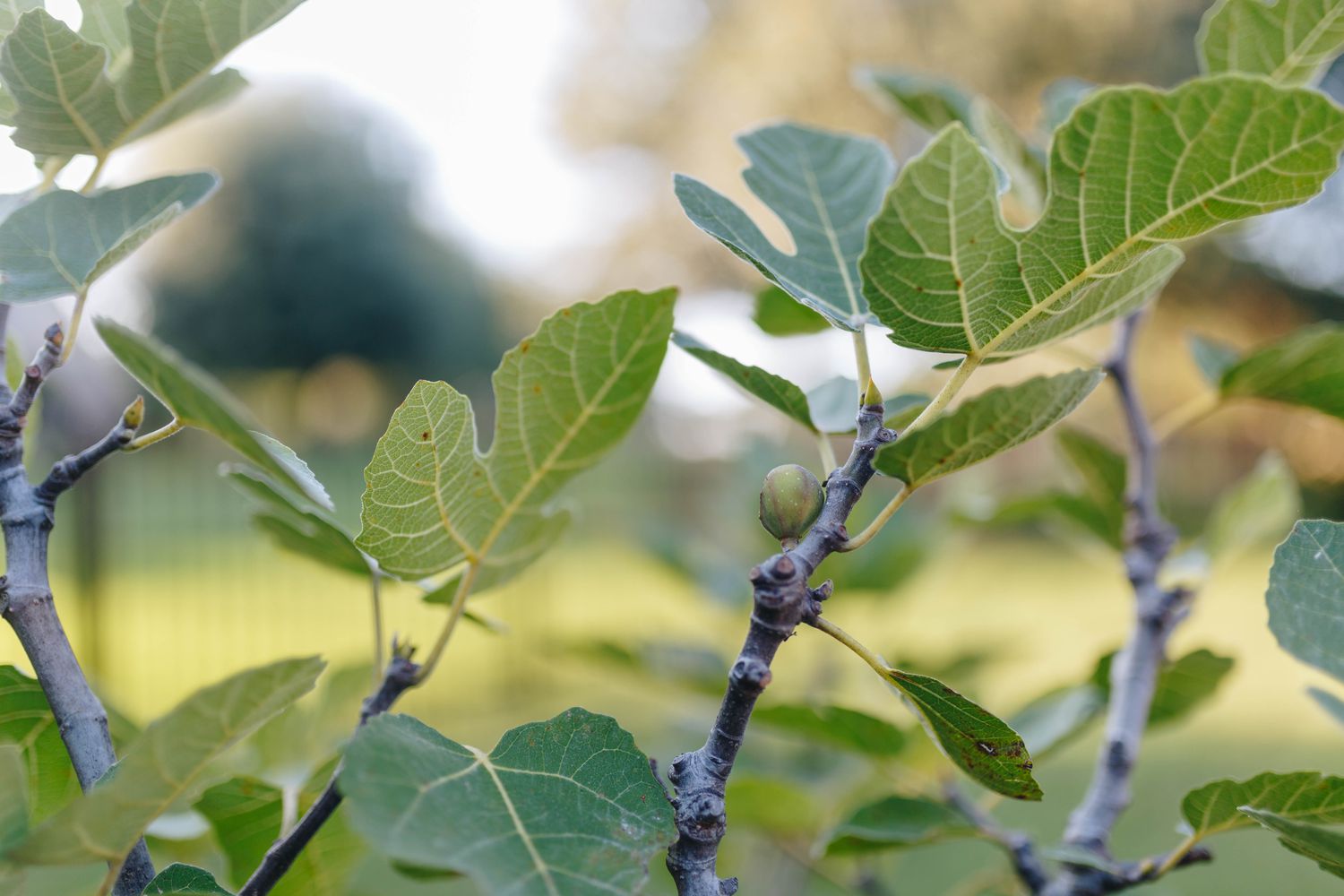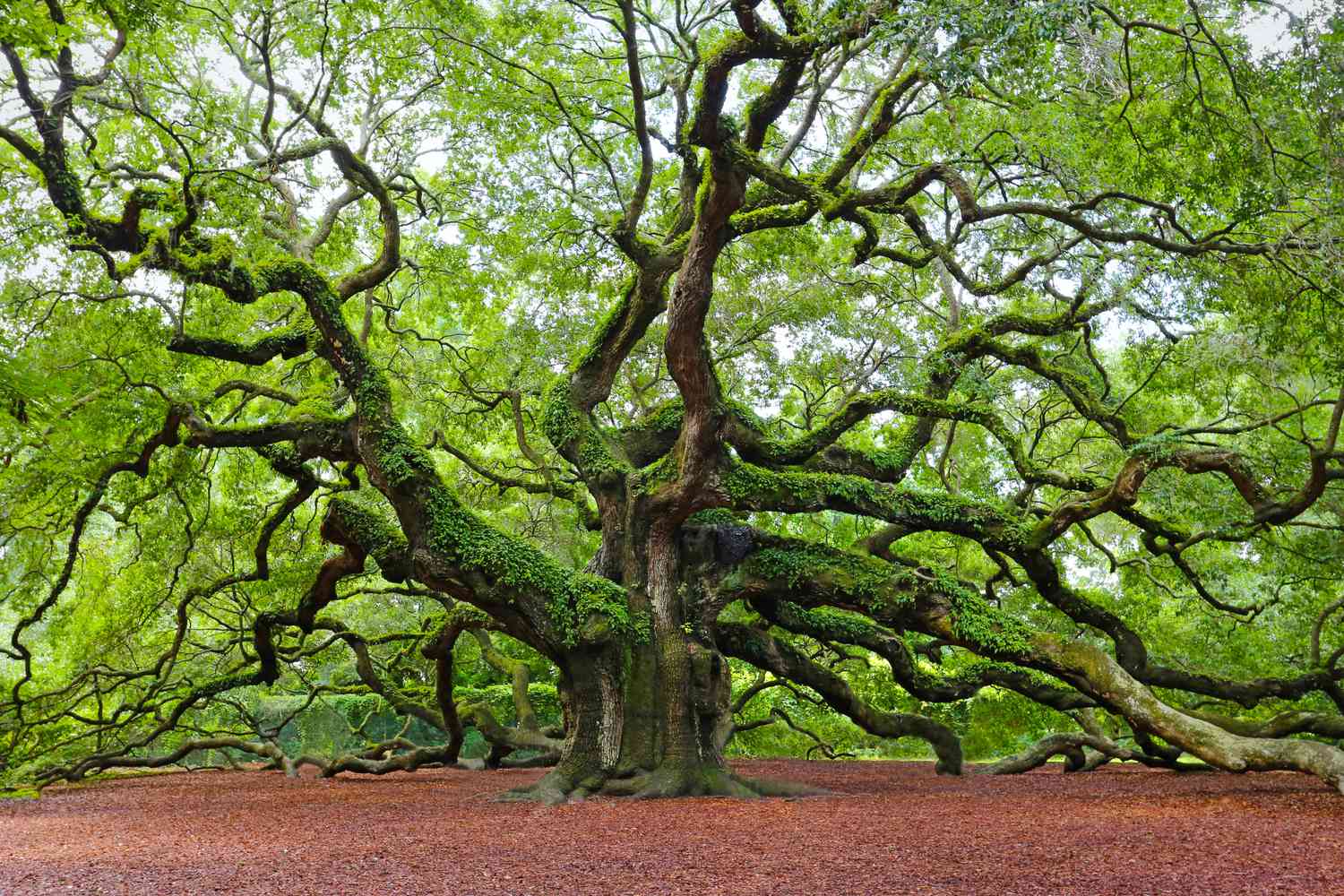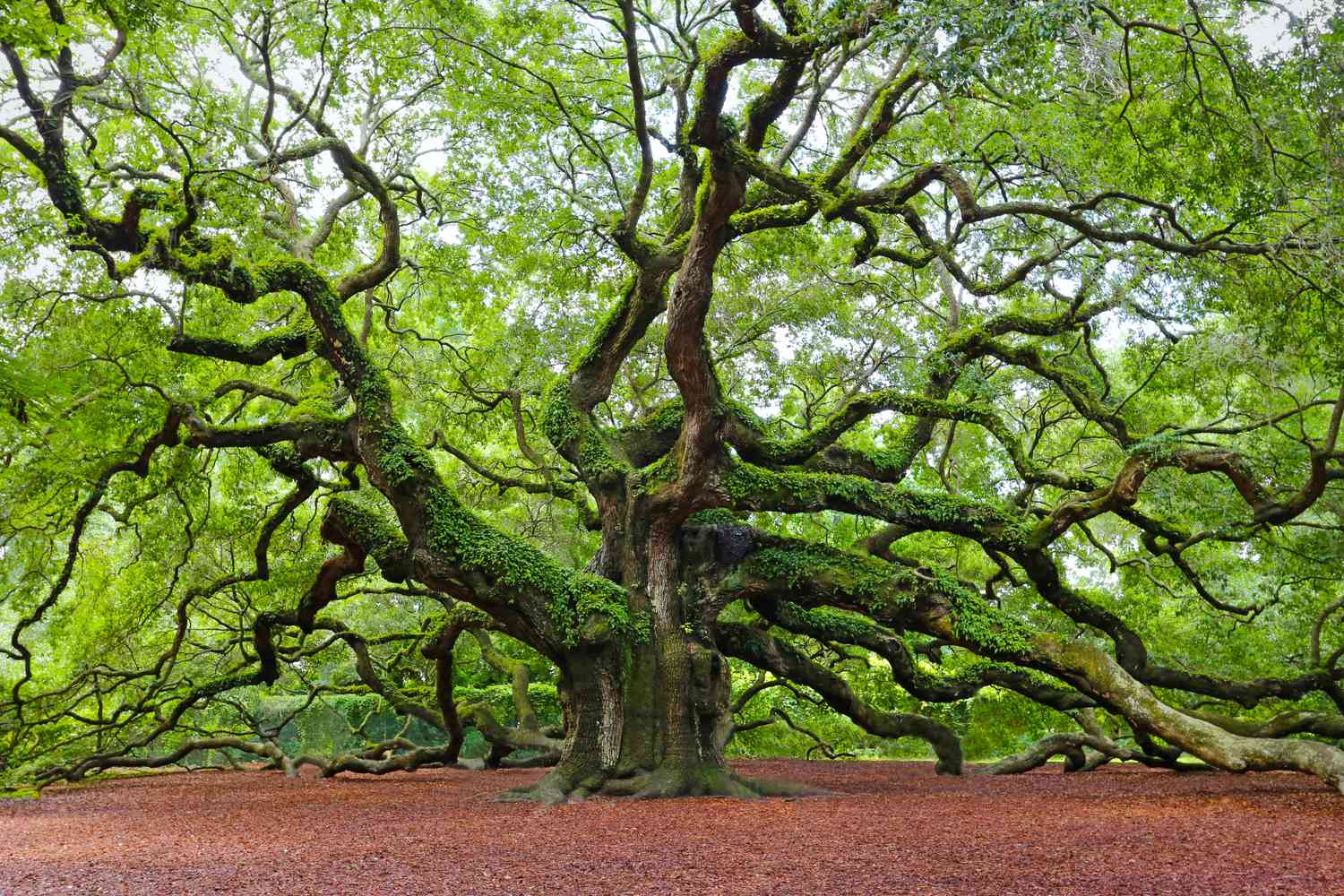Home>Gardening Techniques>Plant Care>How Tall Do Oak Trees Grow


Plant Care
How Tall Do Oak Trees Grow
Modified: January 22, 2024
Discover the optimal plant care for oak trees and learn how tall they can grow. Expert tips and insights on nurturing your oak tree for its maximum growth potential.
(Many of the links in this article redirect to a specific reviewed product. Your purchase of these products through affiliate links helps to generate commission for Chicagolandgardening.com, at no extra cost. Learn more)
Table of Contents
Introduction
Welcome to the fascinating world of oak trees, where these magnificent giants dominate the landscape with their majestic presence. Oak trees are renowned for their longevity and cultural significance, and they have captured the imagination of nature enthusiasts and arborists for centuries.
In this article, we will explore the height range of oak trees, the factors that influence their growth, the exceptional heights recorded, and the environmental conditions that contribute to their vertical stature. Additionally, we will delve into the techniques used to measure their height, providing you with a comprehensive understanding of these remarkable trees.
With their sturdy trunks, sprawling branches, and lush foliage, oak trees have earned their place in mythology, folklore, and scientific research. Revered as symbols of strength and resilience, they have been cherished by civilizations worldwide. Whether you are an aspiring arborist, a gardening enthusiast, or simply intrigued by the wonders of nature, this article will satiate your curiosity about the height potential of oak trees and their remarkable growth patterns.
So, let’s embark on this journey to unravel the secrets of oak tree growth and discover just how tall these magnificent giants can truly reach!
Factors Affecting Oak Tree Growth
The growth of oak trees is influenced by various factors that determine how tall they can ultimately grow. Understanding these factors is crucial to comprehend their growth patterns and adapt cultivation practices accordingly.
One of the primary factors affecting oak tree growth is genetics. Different species of oaks have inherent variations in their growth potential. Some species, like the northern red oak (Quercus rubra), can reach towering heights of up to 100 feet, while others, like the dwarf oak (Quercus pumila), have more limited height capabilities.
Soil composition and fertility also play a significant role in oak tree growth. Well-drained soils rich in nutrients and organic matter provide optimal conditions for healthy root development and overall growth. In contrast, poor soil quality can impede growth and limit a tree’s height potential.
The availability of sunlight is another critical factor. Oak trees are typically classified as moderate to high light-demanding species, meaning they require significant sun exposure for proper photosynthesis and growth. Insufficient sunlight can lead to stunted growth and reduced height.
Water availability and moisture levels are essential factors as well. While oak trees generally prefer moist soil conditions, they are also known for their adaptability to varying moisture levels. Adequate water supply promotes healthy growth, while drought conditions can stunt tree development and limit height potential.
Climate also plays a crucial role in oak tree growth. Different oak species have specific climate preferences, ranging from temperate to subtropical regions. Certain oak species thrive in cooler climates, while others are better suited to warmer or more humid environments. Climate conditions can directly impact a tree’s growth rate and ultimate height.
Other factors that can influence oak tree growth include competition from surrounding vegetation, the presence of pests and diseases, and the overall health and vitality of the tree. Addressing these factors and providing optimal growing conditions can help an oak tree reach its maximum height potential.
By understanding the various factors that affect oak tree growth, arborists and gardeners can implement appropriate measures to nurture these majestic giants and witness them thrive to their full height potential.
Average Height of Oak Trees
Oak trees are known for their impressive size and stature, with many species reaching substantial heights. While the height of oak trees can vary depending on the species and environmental conditions, there are average height ranges that provide a general idea of their growth potential.
On average, most oak tree species range from 50 to 70 feet in height. This height range encompasses popular oak tree species such as the white oak (Quercus alba), the black oak (Quercus velutina), and the pin oak (Quercus palustris). These species are considered medium to large-sized oaks and are often chosen for their ornamental value and shade-providing qualities.
However, it is essential to note that oak trees can exceed these average heights under optimal growing conditions. Some species, such as the bur oak (Quercus macrocarpa) and the swamp white oak (Quercus bicolor), have been known to reach heights of up to 100 feet or more.
The growth rate of oak trees also influences their height. Generally, oak trees have a slow to moderate growth rate, averaging around 12 to 36 inches per year. This slow growth rate contributes to their longevity but also means it can take several decades for them to reach their full height potential.
Additionally, the age of an oak tree can influence its height. Younger oak trees tend to have a smaller stature, while older trees have had more time to grow and develop. It is not uncommon for mature oak trees to tower above their younger counterparts, reaching heights near or even exceeding their species’ average height range.
Keep in mind that these average height ranges are intended to provide a general understanding of oak tree growth. Individual trees may exhibit variations in height due to genetic factors, growing conditions, and environmental influences.
Overall, oak trees are known for their impressive height and imposing presence. Whether they reach the lower end of the average height range or soar to exceptional heights, these magnificent trees never fail to captivate and inspire those who appreciate their grandeur.
Exceptional Heights of Oak Trees
While the average height range of oak trees provides a general idea of their growth potential, there have been exceptional cases of oak trees reaching towering heights. These extraordinary specimens defy expectations, captivating the imagination and serving as awe-inspiring examples of nature’s grandeur.
One such remarkable oak tree is the Angel Oak, which resides in Angel Oak Park on Johns Island, South Carolina, USA. This southern live oak (Quercus virginiana) stands approximately 66.5 feet tall, with an astonishing canopy spread of over 17,000 square feet. Estimated to be around 400 to 500 years old, the Angel Oak is a testament to the resilience and longevity of oak trees.
Another noteworthy oak tree is the Bowthorpe Oak, located in Bourne, Lincolnshire, England. Believed to be over 1,000 years old, this ancient tree stands approximately 42 feet tall, with a massive trunk circumference of 42 feet. The Bowthorpe Oak is a living symbol of endurance and history, having withstood the test of time for centuries.
The Major Oak, situated in Sherwood Forest, Nottinghamshire, England, is yet another incredible example of an oak tree reaching exceptional heights. Estimated to be around 800 to 1,000 years old, this English oak (Quercus robur) stands approximately 52 feet tall, with a staggering trunk circumference of 33 feet. Surrounded by legends of Robin Hood, the Major Oak serves as a cultural landmark and a testament to the significance of oak trees in folklore and history.
These exceptional oak trees highlight the incredible potential for height that these majestic giants possess. While they are outliers in terms of size, they inspire a sense of wonder and reverence for the power of nature to create such magnificent specimens.
It is worth noting that these exceptional heights are not easily attainable for most oak trees. Factors such as favorable growing conditions, genetic predisposition, and undisturbed environments contribute to the impressive growth of these specimens over hundreds of years.
Nevertheless, these exceptional oaks stand as testaments to the potential of oak trees and serve as reminders of the incredible beauty and grandeur that can be achieved in the natural world.
Environmental Conditions and Oak Tree Height
The height of oak trees is greatly influenced by the environmental conditions in which they grow. Various factors, including climate, soil composition, sunlight exposure, and water availability, can significantly impact the height that oak trees can attain.
Climate plays a vital role in determining the height of oak trees. Different oak species have specific climate preferences, and their growth may be restricted or promoted by the prevailing climatic conditions. For example, species like the northern red oak thrive in temperate climates, while species like the live oak (Quercus virginiana) are adapted to subtropical environments. The availability of suitable temperatures, precipitation levels, and seasonal variations in these regions can directly impact the height potential of oak trees.
The composition and fertility of the soil also play a crucial role in oak tree height. Oak trees generally prefer well-drained soils that are rich in organic matter and nutrients. These optimal soil conditions promote robust root development and facilitate the uptake of essential nutrients, allowing the tree to grow to its full height potential. In contrast, poor soil quality with inadequate drainage or low nutrient content can restrict oak tree growth and limit their height.
Sunlight exposure is another key factor that affects oak tree height. Oak trees are typically classified as moderate to high light-demanding species, requiring ample sunlight for photosynthesis and growth. Trees that receive sufficient sunlight can produce more food through photosynthesis and allocate more resources to vertical growth. In shaded areas or dense forests, oak trees may struggle to reach their full height potential due to limited access to sunlight.
Water availability also plays a significant role in determining oak tree height. While oak trees generally prefer moist soil conditions, they can tolerate variations in water availability. However, prolonged periods of drought or excessively wet soils can hinder their growth and limit their height potential. Adequate water supply is crucial for healthy root development, nutrient uptake, and overall tree growth.
Other environmental factors, such as competition from surrounding vegetation and exposure to pests and diseases, can also impact oak tree height. Competition for resources, such as water, nutrients, and sunlight, can limit vertical growth. Similarly, diseases and pest infestations can weaken the tree, leading to stunted growth and reduced height potential.
Understanding the significant role of environmental conditions in oak tree height allows arborists and gardeners to create optimal growing conditions for these majestic trees. By providing suitable climate conditions, well-drained and nutrient-rich soils, adequate sunlight exposure, and proper water management, oak trees can reach their maximum height potential and thrive in their natural habitats.
Methods for Measuring Oak Tree Height
Accurately measuring the height of oak trees is essential for various purposes, such as scientific research, arboriculture, and forestry management. Several methods are commonly used to determine the height of these magnificent trees, each with its advantages and limitations.
One of the most widely used methods is the sine method, also known as the trigonometric method. This method involves measuring the distance between the observer and the base of the tree and then sighting the top of the tree using a clinometer or other height-measuring tools. By measuring the angle between the observer’s line of sight and the ground, trigonometric calculations can determine the tree’s height. This method is suitable for tall trees but requires a clear line of sight to the top.
Another common method is the laser rangefinder method. This technique involves using a handheld laser rangefinder to measure the distance from the observer to the base of the tree and then aiming the rangefinder at the tree’s top to obtain the vertical distance. By subtracting the height of the observer, the tree’s height can be accurately determined. Laser rangefinders are convenient and effective, especially for smaller and more accessible trees.
For taller and hard-to-reach oak trees, alternative methods such as the use of an inclinometer and an extendable measuring pole can be employed. The inclinometer measures the angle between the observer and the tree’s top, while the extendable measuring pole is used to measure the distance from the observer to the tree’s base. By combining these measurements, the height of the tree can be calculated.
When precise measurements are needed, advanced technologies like lidar (light detection and ranging) and drone-mounted sensors can be utilized. Lidar involves emitting laser pulses from an aircraft or ground-based device and analyzing the reflected signals to create a detailed 3D map of the tree and its surroundings. Drone-mounted sensors, such as LiDAR or photogrammetry cameras, can capture high-resolution images and elevation data to calculate the tree’s height with exceptional accuracy. These advanced methods are particularly useful for large-scale forest inventories and scientific studies.
It is important to note that regardless of the method used, it is crucial to consider the tree’s overall health, growth habit, and any potential obstructions that may affect accuracy, such as branches or nearby structures. Additionally, multiple measurements from different angles and positions should be taken to ensure accuracy and compensate for potential errors.
By employing these various methods for measuring oak tree height, researchers, arborists, and forest managers can gain valuable information about tree growth, habitat assessment, and overall tree health. These measurements provide insights into the vertical development of oak trees and contribute to better management and conservation practices.
Conclusion
Oak trees have long captivated us with their imposing size, remarkable longevity, and cultural significance. Their height potential is influenced by various factors, including genetics, soil composition, sunlight exposure, water availability, and climate conditions. While the average height range for oak trees generally falls between 50 to 70 feet, exceptional specimens have been known to surpass these limits, reaching heights of over 100 feet.
The height of oak trees is intricately tied to environmental conditions. Climate, soil composition, sunlight exposure, and water availability all play crucial roles in determining their growth potential. Tolerances and preferences for specific conditions can vary among oak species, highlighting the adaptability of these majestic giants.
Accurately measuring oak tree heights is essential for scientific research, arboriculture, and forestry management. Various methods, such as the sine method, laser rangefinders, inclinometers, and advanced technologies like lidar and drone-mounted sensors, enable accurate height measurements for different tree sizes and locations.
By understanding the factors that affect oak tree height and employing appropriate measurement techniques, we gain valuable insights into these remarkable trees and their ecological significance. This knowledge can inform better management practices, facilitate conservation efforts, and deepen our appreciation for the beauty and grandeur of oak trees.
So let us continue to marvel at the towering oaks that grace our landscapes, reminding us of nature’s power and resilience. As we nurture and protect these magnificent trees, we ensure their continued growth and presence for generations to come.










